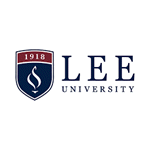Below is a summary of the abstract you submitted. Presenting author(s) is shown in bold.
If any changes need to be made, you can modify the abstract or change the authors.
You can also download a .docx version of this abstract.
If there are any problems, please email Dan at dar78@pitt.edu and he'll take care of them!
This abstract was last modified on March 31, 2025 at 8:22 a.m..

Both bacteriophages, ELee24 and Annapurna, were found on the same plate after an enriched isolation from soil collected in a cow pasture. ELee24 had much larger plaques compared to Annapurna’s. Interestingly, ELee24 was identified as a member of the EE cluster, having only 24 genes, while Annapurna ( EF cluster), had 84 genes. While the phages had drastically genome sizes, both ELee24 and Annapurna had the necessary protein functions that all bacteriophages need.. Because of the extensive work that has already been done on phages in the EE cluster, ELee24’s genome annotation has already been submitted for review. In contrast, Annapurna with a much larger genome is still under review by the current SEA-Phage co-hort at Lee University.
